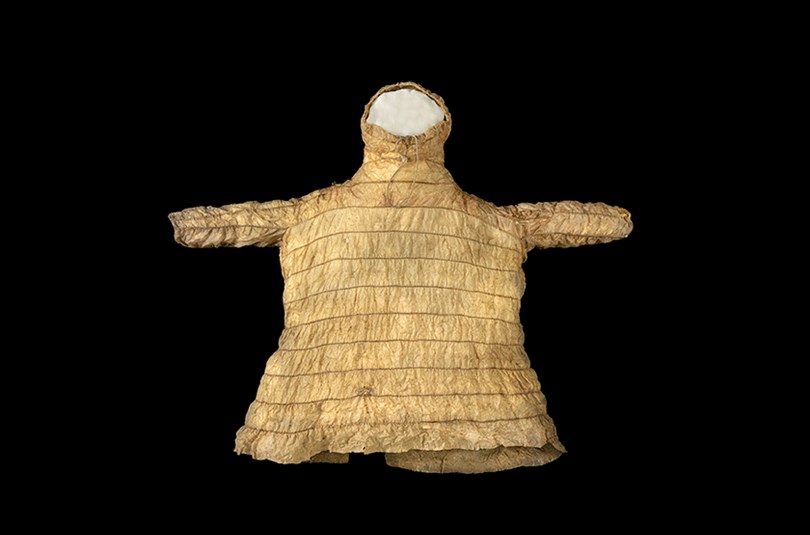
parkas—these are constructed from marine mammal intestine, most likely seal or walrus. The intestine is cleaned thoroughly and stretched to dry. It is split lengthwise to produce strips that are tightly sewn together with sinew and fibrous grass. These parkas are lightweight, strong, and waterproof. They are often embellished with other materials such as feathers, fur, and yarn. The parkas are used during fishing, hunting, and gathering activities or during ceremonies.
One of the parkas we treated (A1086.1) was acquired from Kwigllingok Village, Alaska. This parka dates to circa 1900 and entered the Museum collections in 1960–1970 in poor condition. It was brittle and twisted. We mapped out a treatment with the goal to expose the parka to a controlled source of moisture so it could be gradually unfolded, padded for shaping and support, and examined for condition and further treatment.
Denver Museum of Nature & Science conservator Jude Southward and contract conservator Jessica Fletcher constructed a tent of plumbing pipe covered with polyethylene plastic. A clear window was incorporated to keep an eye on the process. A monitor to record temperature and relative humidity was also placed in the tent. During the work day, the parka was humidified to 70% to 80% using a home humidifier. The parka was periodically pulled out of the tent for a few minutes to reshape it before it began to stiffen again. As it was gradually unfolded, the parka was reshaped and padded using delicate polyester fabrics that were first washed to soften their texture. Once the parka had regained its shape, various large tears were visible and were repaired using a material made from ox intestine, which is colorless and strong, adhered with rice starch paste.








